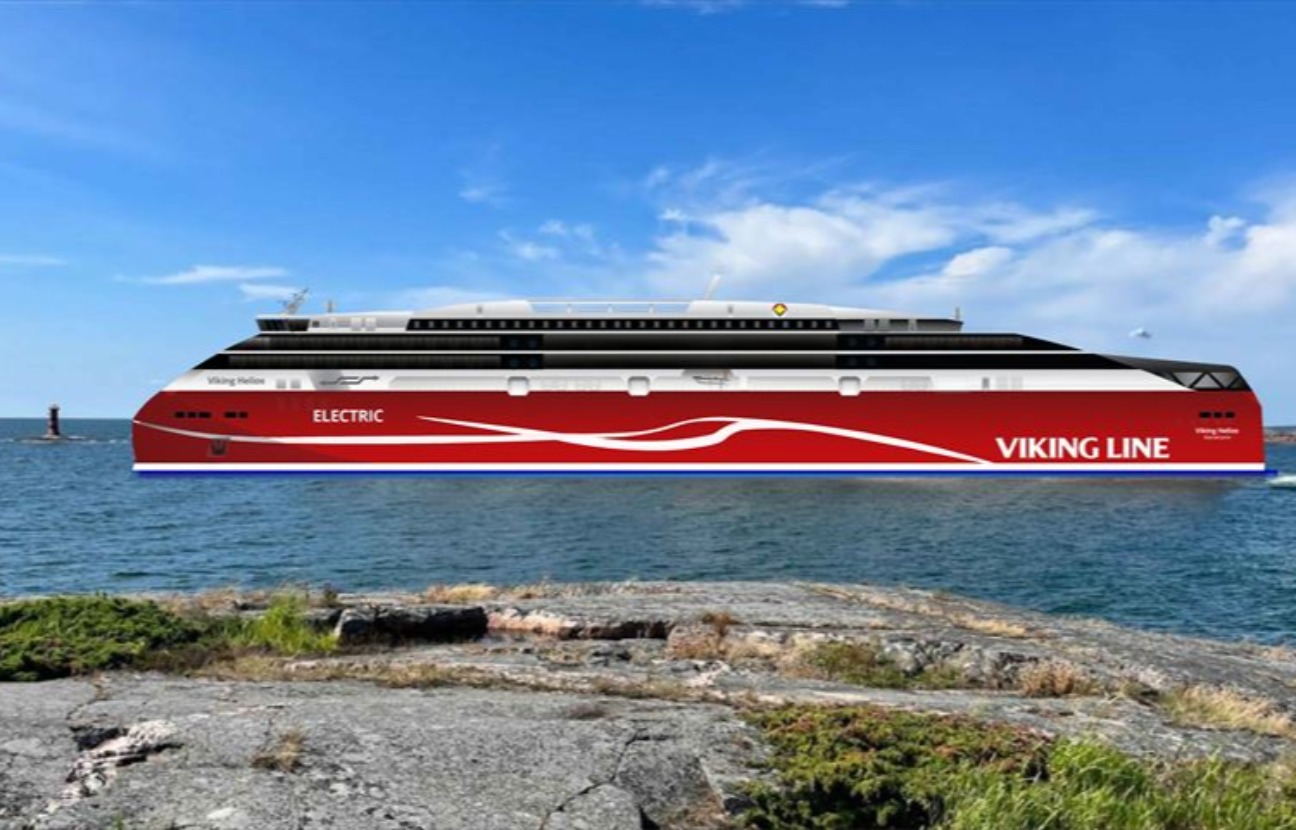Viking Line Unveils Helios
Concept for a Green Corridor Between Finland and Estonia

Scandinavian ferry operator Viking Line has unveiled Helios, a pioneering vessel concept designed to launch the world’s largest fully electric passenger-car ferry. The company sees Helios as a key step towards creating an emission-free maritime corridor between Helsinki (Finland) and Tallinn (Estonia) — a goal that could be realised as early as the beginning of the 2030s.
“Helios heralds a new era in maritime transport, just like the first sail, steam, and motor ships did in their time. The concept proves that large-scale emission-free maritime transport is no longer a utopia. The world’s largest fully electric passenger-car ferries could be in operation as early as the beginning of the next decade. We are strongly committed to realising the ambitious vision that Helios represents,” said Viking Line President and CEO Jan Hanses in an interview with MoveTheNeedle.news.
A Legacy of Innovation in the Baltic Sea
Founded in 1959 to improve connectivity between Åland — an autonomous region of Finland — and the Finnish mainland, Viking Line has grown into Finland’s largest maritime employer, serving over 250 million passengers by 2024. Over time, the company has expanded its route network across the Baltic Sea and established itself as a key cargo link between the Nordics and continental Europe.
Viking Line has consistently invested in greener maritime transport. Its vessel Viking Grace, delivered in 2013, was the first passenger ship in the world to run on both liquefied natural gas (LNG) and biogas. This commitment continued with Viking Glory in 2022, an even more energy-efficient ship that, together with Grace, allows passengers to opt for biofuel use, cutting emissions by up to 90%. Viking Line’s freight customers have also begun signing agreements to shift towards biofuel-powered transport.
Helios: A Vision of Scalable, Electric Maritime Transport
Now, the company is turning its attention to full electrification. Of all Viking Line’s routes, only the 80-kilometre Helsinki–Tallinn passage falls within the operational range of an all-electric ferry — a fact Hanses acknowledges: “Of the routes that we trade, only Helsinki–Tallinn is within the range of an all-electric vessel. The distances of the Helsinki–Stockholm and Turku–Stockholm routes are too long.”
The Helios concept is the result of a research collaboration with the Rauma shipyard and other technology partners. With a battery capacity of 85–100 megawatt-hours (MWh), the ferry would carry up to 2,000 passengers and freight equivalent to two kilometres of cargo vehicles, making the crossing in just over two hours. The vessel will stretch 195 metres in length and 30 metres in width, reaching speeds of around 23 knots. Its most noticeable design feature: the absence of a funnel, signalling its completely emission-free propulsion system.
Charging will take place in port, and infrastructure is a key hurdle still to be cleared. “We believe that the technology is there. The charging in the ports is still challenging, but we believe that it can be achieved,” Hanses said. “The charging infrastructure in the ports needs to be developed, as it presently is not there. The project will need external aid, and for that purpose we have applied to the EU innovation fund. We expect an answer within November this year. The remainder we will finance ourselves, through banks.”
Port and City Backing for a Green Maritime Corridor
The Helios concept is supported by the FIN-EST Green Corridor project, launched by the cities of Helsinki and Tallinn. Founding members include the ports of both cities, Estonia’s Ministry of Climate, and ferry companies Viking Line, Rederi AB Eckerö, and Tallink Grupp. The aim is to establish the infrastructure and policy conditions for fully green shipping on the route.
“It is great that both cities and their ports have committed to creating a green maritime corridor. Electric shipping is not created solely by ship investments. It also requires efficient, reliable charging infrastructure in ports,” said Hanses. “The home port for the new electric vessels would be Jätkäsaari, where the Port of Helsinki has a development and expansion programme underway until 2032. The progress of this project is extremely important for our own plans.”
The volume of traffic between the Port of Helsinki and Estonia is projected to grow significantly. According to the port’s forecasts, passenger numbers on the Helsinki–Tallinn route will rise from 5.5 million in 2024 to 11.6 million by 2040, with cargo volumes expected to increase in parallel.
Electric Ferries as a Competitive Advantage
“The Helsinki–Tallinn route performed particularly well last year, and we believe volume will continue to increase – there is strong demand, based on need, for connections between Finland and the Baltics,” Hanses noted. “EU emissions trading fees and tightening regulations place an ever larger burden on fossil fuel-based maritime traffic every year, but emission-free technology would enable us to increase capacity on the route. Our goal is to order two electric ships for the route, which would double our current capacity year-round.”
If realised, Helios and its future sister vessel will not only mark a technical milestone in maritime transport, but also reinforce the Nordic region’s leadership in sustainable shipping — creating a scalable model for other medium-distance ferry routes worldwide.